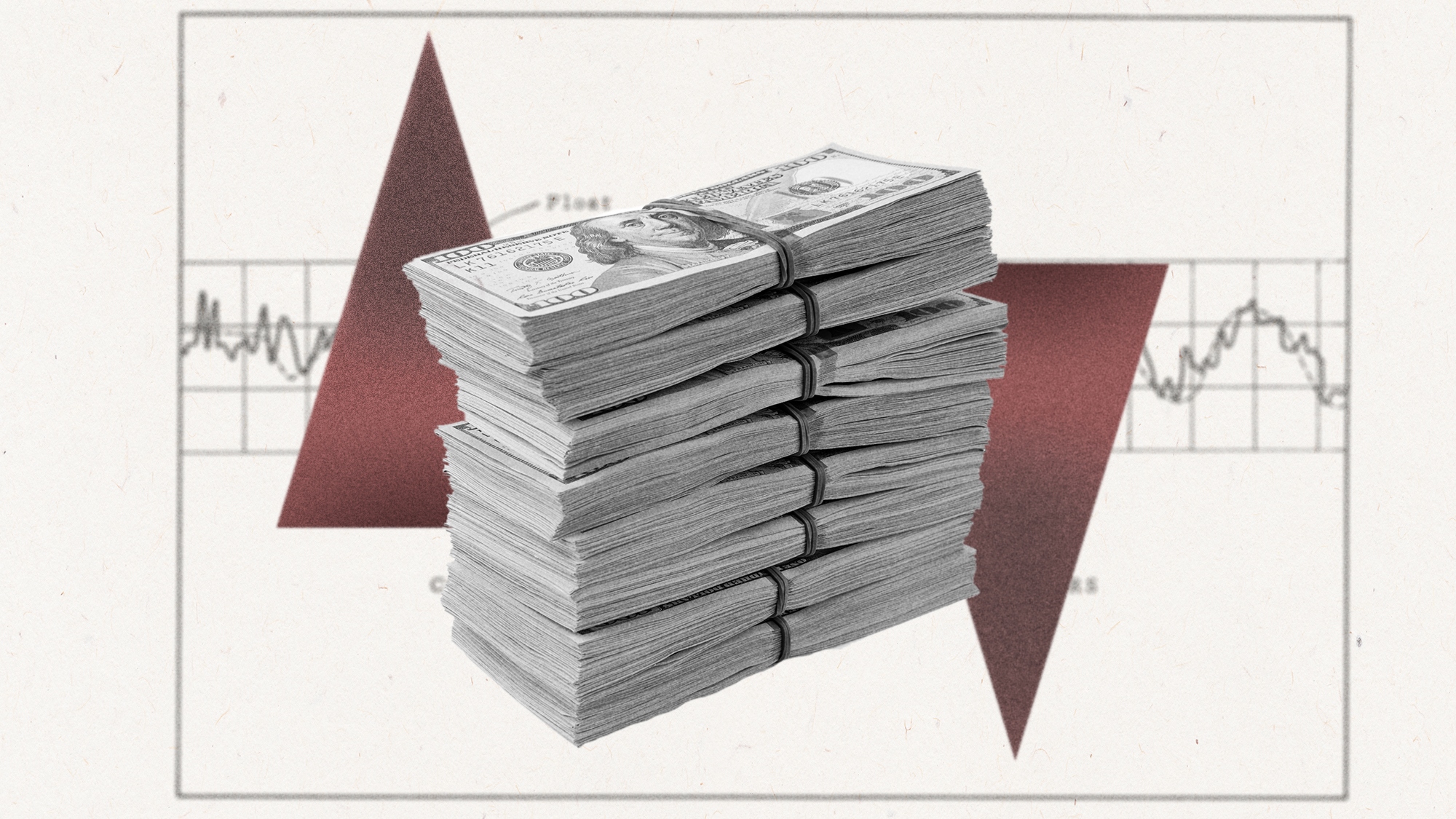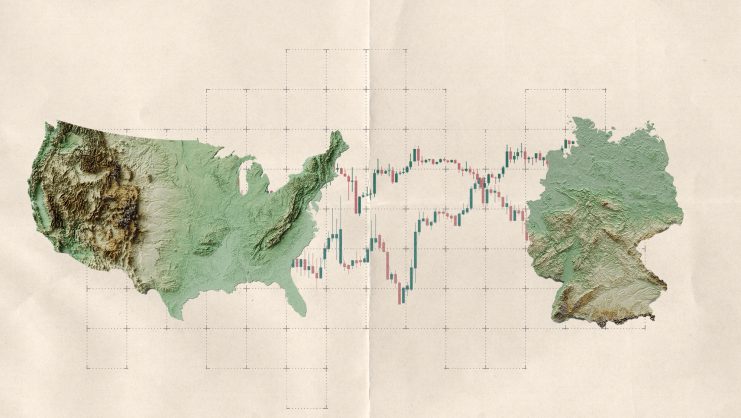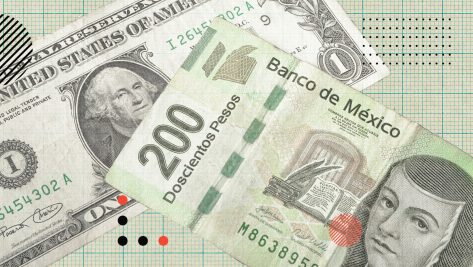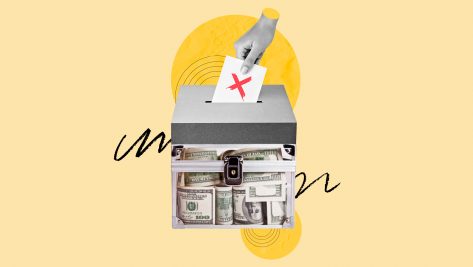The United States is facing a critical economic issue: its national debt is growing faster than its income, with no clear plan for repayment– and this could have serious repercussions for the global economy. In fact, the U.S. deficit looks like it will be more than 7% of GDP this year ($1.9 trn). This is not only a very large number, but it is nearly twice the deficit/GDP ratio of the next-ranked developed economy.
Unfortunately, this is not the only reason why alarm bells are ringing over the US government debt. The bad news persists regarding U.S. deficits and debt in 2024:
- U.S. public debt is at its highest level ever in peacetime ($34.62 trn), and there is no sign it will decline if current trends persist.
- Annual interest payments on the U.S. public debt are more than $1trn.
- The U.S. national debt is growing by $1trn every 100 days and roughly $3.6trn per year. (To put this in perspective, the entire Spanish economy this year is about $1.7 trn) This is the fastest rate of increase of any developed country.
- The IMF, which usually focuses its messages on developing countries, is urging the United States to “urgently” address its mounting fiscal burden, and predicts that the debt/GDP ratio will hit 140% by 2032, compared to 120.7% today.
There are more facts, and all of them are equally alarming. Does this mean that the United States, the world’s largest and possibly most dynamic economy, might enter a debt crisis? If so, why does neither presidential candidate or party have a plan to reduce it? And if no one does reverse the trend, how would this affect the world?
For a country like the United States, the world’s biggest by GDP and by far the most dominant in global bond and currency markets, there is no simple answer to the question of whether its debt is a problem. Debt is less risky if it is in the nation’s own currency (as all U.S. debt is); and if there is strong demand for the country’s bonds (true for the United States). Normally, economists also look at debt/nominal GDP ratios, such as those cited by the IMF above; and on this metric many developed countries have higher debt/GDP ratios than the United States (Japan, Italy, Greece, and Spain are four of them). There is no clear upper limit beyond which debt enters crisis mode, but numbers above 100% of GDP have become relatively commonplace since the financial crisis and the pandemic.
Economists also look at interest rates to determine whether debt is a problem. Fast growth and low interest rates make debt sustainable but when the former is falling and the latter is rising, as it is now, concerns arise. A group of radicals called the Market Monetarists used to argue that a country with a strong currency like the United States should never worry about its debt as long as government spending successfully promoted growth. They have gone strangely quiet since interest rates climbed to their highest level since 2001.
In regards to these static comparisons, the United States debt still looks relatively safe. The problem lies in the debt dynamics. The debt/GDP ratio may be within an “acceptable” range now, but both the numerator and the denominator in the ratio are changing all the time. Fast U.S. growth rates helped soften the debt increase. But a growth slowdown like the one that is probably approaching, combined with a much faster rise in debt, would do just the opposite. As mentioned above, the debt/GDP ratio in the United States is rising faster than anywhere else in the developed world.
Another changing dynamic is U.S. interest rates. During a period of extraordinarily low interest rates like 2009-2022, it was easy to forget that debt can become a serious problem. Nobel laureate Paul Krugman explained the relationship between GDP growth and interest rates in terms of snow: if GDP growth is higher than the interest rate, the debt “melts away” but if it is lower, it “snowballs”. In the most recent quarter, nominal GDP growth in the United States was 5.37%, and the average interest rate on debt had climbed from 1.56% in January 2022 to 3.27% (4.35% on 10-year Treasuries). Growth is still higher than the interest rate, but the difference is narrowing and growth looks to be on a downward trend. The snowball phase may not be far away.
And there is no sign that the country has a plan to bring the situation under control. Fiscal deficits have been chronic in the United States since the mid-1970s, except for a brief hiatus under President Bill Clinton at the turn of the century (1998-2001). They have grown increasingly larger since the financial crisis, the Trump tax cuts, and the pandemic.
Global investors may conclude that U.S. debt has become an unsolvable political issue.
Even worse, they persist despite fast growth. A healthy government budget would show a surplus when the economy is growing fast, and a deficit only when the economy is troubled. (Note that this means that debt should go up only in the “bad” years.) Except for the pandemic recession, the United States has grown faster than its “ideal” rate since 2018. This should push its budget toward surplus, but instead U.S. deficits, and its debt, have become ever larger.
How did this happen? It was not so long ago that there were still fiscal conservatives on the U.S. political landscape. But the Reagan revolution and the Tea Party radicals who followed him, vowing never to raise taxes and only to cut spending, have made Republicans immovable on taxes. US taxes as a percent of GDP are among the lowest of the developed countries, and they continue to decline. If taxes fall while spending continues to rise, as it will due to military conflicts, rising spending on pensions and health care for the old, investment in the green transition, and the interest payments themselves, deficits will grow exponentially. President Joe Biden has proposed higher taxes on top incomes to help close the gap, but he has new spending plans, and candidate Donald Trump wants to keep cutting taxes.
If present trends hold and the debt continues to rise while Congress looks the other way, what could this mean for the world?
An actual U.S. debt default is an extremely remote possibility. The U.S. Constitution, in an obscure post-Civil War clause in the 14th Amendment, seems to outlaw default on government debt. It is highly unlikely that even a radical Congress would risk non-payment in one of the recurring debt ceiling showdowns.
But a country does not have to default for global bond markets to panic, especially if that country is the United States. If interest payments continue to soar and agreement cannot be reached on curbing the ever-rising debt, global investors may conclude that U.S. debt has become an unsolvable political issue. If that happens, buyers of U.S. bonds would either choose other, non-U.S. assets (less likely) or demand higher interest rates in order to be willing to keep buying U.S. bonds (quite likely). As confidence flagged, U.S. interest rates would spike, the U.S. stock market would suffer, and short-term funding markets would be constrained. Debt payments would soar. This would set off a vicious “doom loop” cycle –higher interest rates, more risk, reducing growth while further boosting interest rates and debt – that would affect growth and wealth in the United States and the rest of the world, and make the debt burden worse. If a flight from dollars ensued, the U.S. currency would fall, intensifying the cycle. A weaker dollar would fuel U.S. inflation, forcing its central bank to react with higher interest rates, possibly strengthening the dollar temporarily but setting off a wave of increases around the world, further reducing U.S. and global growth.
Ultimately, the worst long-term impact for the United States would be the blow to the world’s trust in its economy as a “safe haven”. For decades, US Treasuries have been seen as the world’s safest financial asset, and the dollar is the world’s reserve currency. If this trust were lost, the impact could also last for decades, and deprive the United States of the privilege of being able to borrow unlimited amounts at some of the world´s lowest interest rates.
But the chain of events described here would also bring consequences for other countries and for global trade and capital flows that might surprise many who applaud the fall of the “almighty dollar”. The dollar’s prominence makes international transactions simpler and cheaper than they would be in a world with many competing reference currencies. The costs of hedging against changes in the value of the many currencies being used would rise, making trade and investment more expensive. Both would suffer, pushing the world further into fragmented currency and investment markets and eroding globalization.
There are no easy replacements either to the U.S. dollar or to U.S. Treasury bonds on the near-term horizon. Over time markets would gradually move toward some alternative: euros? yuan? cryptocurrencies? an eventual BRICS currency? There is no obvious or immediately feasible choice, and the transition could be rough and costly. At some point, the world would learn to live with diversity, higher interest rates and transaction costs, and probably less globalization and growth.
This does not all have to happen. A new U.S. Congress after the November elections might decide to accept its glaringly urgent job and address the debt. Is this likely? While the country is unsure who its presidential candidates are, the question is impossible to answer.
There is one bright spot on the horizon. Jobs in global economic and financial sectors will skyrocket, as more and more experts are needed to assess and hedge risks and compare currency, trade, and investment options in a very different world.
© IE Insights.











